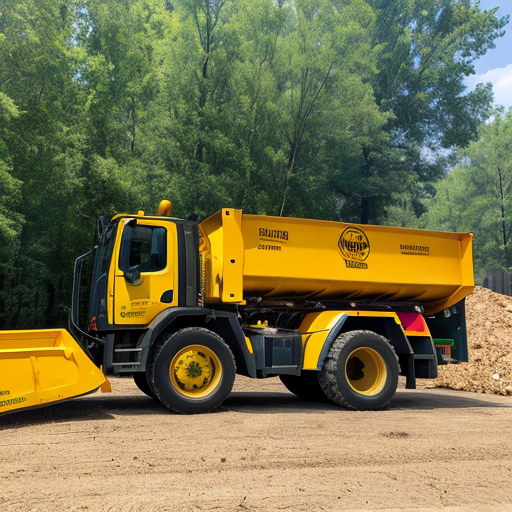Frida is a woman with a love of all things technological and decorative. She spends her days finding new ways to merge the two worlds together, and has made a name for herself in the process. Her work has caught the eye of many in the tech industry, and she is often consulted for her expertise. Darlene also enjoys spending time with her family and friends, and loves to decorate her home in her free time.

Wood chippers are valuable tools in the wood processing industry, enabling efficient and convenient wood waste reduction. Central to their functionality are the wood chipper blades, which play a critical role in achieving optimal wood chipping performance. Choosing the right type of wood chipper blades is crucial for ensuring efficient operation, maximizing productivity, and obtaining high-quality wood chips. In this article, we will explore key considerations for selecting the right type of wood chipper blades to achieve optimal wood chipping performance.Welcome to visit the wood chipper blades & knives – JYF Machinery to learn more!
Blade Material:
The material of the wood chipper blades greatly influences their durability and cutting performance. Common blade materials include high-carbon steel and hardened alloy steel. High-carbon steel blades are more affordable and suitable for occasional or lighter use. Hardened alloy steel blades, on the other hand, offer superior durability and longevity, making them ideal for heavy-duty and continuous wood chipping operations. Consider the frequency of use, the type of wood being processed, and the expected workload when choosing the blade material for optimal performance.
Blade Design:
Wood chipper blades come in various designs, including straight blades, reversible blades, and flail blades. Each design has its unique characteristics and advantages. Straight blades are known for their simplicity and ease of maintenance, while reversible blades offer the advantage of rotating the blades for extended use before sharpening or replacement. Flail blades feature multiple cutting edges and are effective for processing fibrous materials. Understanding the different blade designs and their suitability for specific wood chipping applications is crucial in selecting the right type for optimal performance.
Blade Size and Configuration:
The size and configuration of the wood chipper blades impact the chip size, cutting efficiency, and overall chipping performance. Larger blades generally result in larger wood chips, while smaller blades produce smaller chips. Consider the desired chip size for your specific application, as well as the capacity and capabilities of your wood chipper when selecting the blade size. Additionally, the blade configuration, such as the number of blades and their arrangement, can affect the throughput and cutting efficiency. Experimenting with different blade sizes and configurations can help fine-tune the wood chipping process for optimal performance.
Blade Sharpness and Maintenance:
Sharp blades are essential for efficient wood chipping. Dull or worn-out blades can lead to reduced cutting efficiency, increased power consumption, and decreased chip quality. Regular blade maintenance, including sharpening or replacement when necessary, is crucial to maintain optimal performance. Ensure that you have proper sharpening tools and techniques or consult a professional for blade maintenance. Additionally, periodic inspections of the blades for signs of wear or damage and prompt replacements as needed are essential for maintaining optimal wood chipping performance.
Compatibility with Wood Chipper:
Lastly, ensure that the selected wood chipper blades are compatible with your specific wood chipper model. Consider the blade mounting system, dimensions, and specifications recommended by the manufacturer. Using blades that are specifically designed for your wood chipper ensures proper fitment, optimal performance, and safety during operation.
Conclusion:
Choosing the right type of wood chipper blades is crucial for achieving optimal wood chipping performance. Consider factors such as blade material, design, size and configuration, sharpness and maintenance, and compatibility with your wood chipper when making your selection. By carefully evaluating these considerations and understanding your specific wood chipping needs, you can choose the appropriate blades that will enhance cutting efficiency, produce high-quality wood chips, and maximize the overall performance of your wood chipper.
Remember, selecting the right type of wood chipper blades is an investment in the long-term efficiency and productivity of your wood chipping operations. Take the time to research, consult professionals if needed, and make an informed decision to ensure optimal wood chipping performance.
